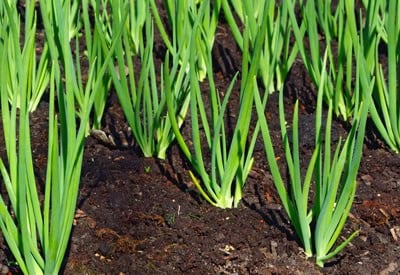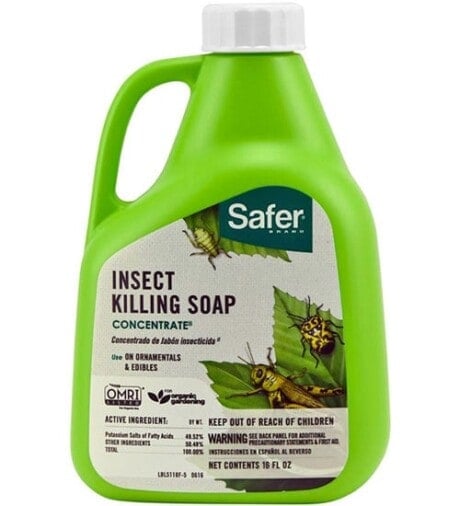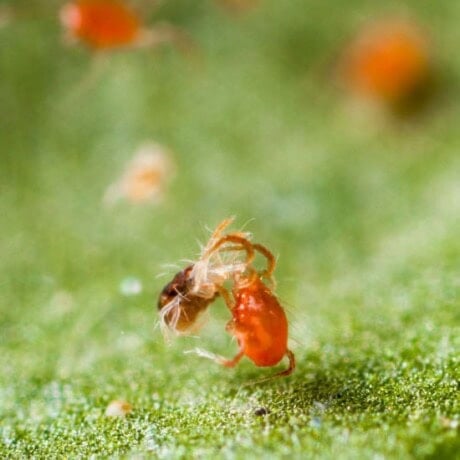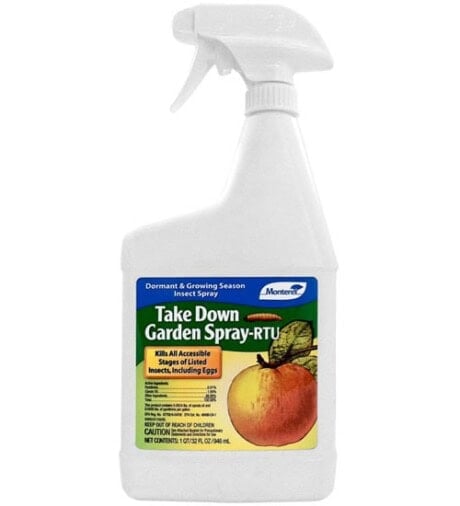Russet Mites

Russet mites, as well as Hemp Russet Mites, are one of the most trickiest and difficult to control pests for growers everywhere. They are part of the Eriophyidae family of mites and are microscopically small making them incredibly hard to detect until they’ve caused a lot of damage.
Their near invisibility makes these mites a particular threat to become established in your garden before you realize it.
They are among 100 or so plant-specific eriophyid species, including gall, rust, and blister mites, the tomato russet mite.
Unlike spider mites, these voracious plant pests leave no webbing or other secretions when present. Visible damage to the plant is the first indication of its presence and is damage often mistaken for mineral and other nutritional deficits.
So read our full guide to figure out what exact russet mites are, how to identify them and their damage, and what to do if you have a russet mite infestation.
What are Russet Mites?
A russet mite is a microscopically small insect that has many host plants, including greenhouse and field-grown crops including tomatoes and cannabis plants.
They are members of the Eriophyidae family of mites and are so small that they are virtually undetectable by the naked eye until they start damaging plants and crops. Even then, symptoms of their damage mimic that of nutrient deficiencies or mosaic viruses.
Due to their minute size, they attach themselves to clothing, removed debris, and even other pests such as aphids and whiteflies, and cause infestations in this manner. For this reason, sanitation is incredibly important in infested areas.
Life Cycle of a Russet Mite
Females over winter just inside stems of the plants they infest or where twigs are joined to stems. Translucent eggs, nearly adult in size, are laid in spring and go through two nymph stages, both little different than the adult.
The mites produce multiple, overlapping generations through the course of a season, maturing in as little as eight days in warm, humid conditions.
How to Identify Russet Mites?
Unfortunately, russet mites cannot be identified with the naked eye due to their very small size. Seen through a lens, russet-hemp mites are tapered, translucent, wedge-shaped cylinders that take on a yellow tint, especially in groups. Unlike most varieties of mites, eriophyids, including russet mites, have only two pairs of legs.
Like spider mites and others, they are increasing their range and are now common in places not previously seen. Because of their size, they’re effectively dispersed by wind.
Crop specific, they tend to multiply in areas of intensive growing, like the tomato-raising regions of Florida, and also do quite well indoors where warm, moist environments facilitate rapid reproduction. In the past decade, they have spread from growers in California north into Oregon.
The easiest way to identify them is to spot the symptoms of their damage, so let’s look at what those are in more detail:
Symptoms of Russet Mite Damage
Mites are sap suckers working at the cellular level. Damage typically appears first at the bottom of plants and moves upward as they feed. Lower leaves begin to yellow and curl, the leaf droops and the stem discolors. Petioles start becoming brittle, which leads to new leaves falling off the plants.
As the plant’s nourishment is sucked away, less vigorous new growth and flowering are observed. The tiny mites, in increasing numbers, spread to all parts of the plant. Over time, russet mites can have a severe impact on bud and flower production and that’s why preventative measures and early control are incredibly important.
The mites seem particularly attracted to flower resins and will congregate in flowers and blossoms where they can effectively hide and do great damage. If left unchecked, the mites will eventually sap the entire plant.

How to Effectively Control and Get Rid of Russet Mites
The best controls for both indoor and outdoor growers are preventive methods.
Make sure you don’t introduce mites into your grow space by bringing in infected plants or contaminated potting soil that may carry female mites or eggs. Regular and close scrutiny of your plants, especially around the leaves nearest the soil line if outdoors, or anywhere a plant is flowering, is crucial to early detection.
What might appear to be an iron or magnesium deficiency may well be an infestation of russet mites. If in doubt, treat for mites as well as adjusting nutrient solutions or amending soil. Finding and removing mites in their first generation, a period that can be short as a week under the right conditions can short-circuit a cascade of generations once the mites begin laying eggs.
Many of the precautions and treatments used on spider mites also apply to this pest. Inspection of plants is crucial during treatment. Look to see if the damage has stopped.
Remove all damaged leaves, stems, and even entire plants and dispose of them in a way that won’t spread the tiny creatures or their eggs.
Outdoor Plants Control Against Russet Mites:
- Russet mites are most frequently found in outdoor container plantings. This suggests that they’re introduced both in potting soils and plants brought into the garden. Use only dependable, high-quality potting medium and plants from a nursery you trust. Don’t be afraid to ask if mites have been a problem. Even if they’ve been dealt with and the plant shows no signs of damage, eggs may still exist in the soil.
- Introducing beneficial nematodes just as soil temperatures begin to warm and ahead of planting can help destroy eggs that are in the soil and nymphs once they hatch. Apply a second round of vermiculite-carried nematodes if damage to the lowest leaves is spotted.
- Avoid over-fertilizing plants. Mites are attracted to vigorous green growth that comes from too much nitrogen.
- Periodic releases of predatory mites such as Amblyseius swirskii, Amblyseius andersoni and Amblyseius Californicus can blunt infestations, giving you time to deal with them. (Yes, the same spray mentioned below will also kill beneficial mites.)
- Because of their near invisibility, it’s difficult to apply insecticidal soaps to suspected mite infestations. Home-made sprays using garlic, hot peppers, or citrus oils will not usually take down mites but may provide some deterrent. (Because they often arrive in the wind, russet-hemp mites aren’t easily deterred.)
- Neem oil will repel and kill mites. It should be applied at first signs of damage.
- Pyrethrum/ canola oil sprays have proven effective in killing mites but require complete coverage to ensure that none of the microscopic pests are overlooked. Tailor applications to the lifecycle of the mite. Spraying once a week — once every five days in warm conditions — for three to four weeks should cover adults, emerging nymphs, and eggs.
- One of the most effective ways to treat russet mite infestations is with micronized sulfur. When micronized sulfur is diluted in water, it is typically applied with a sprayer. It is best to use three applications in one week, then inspect the plants and repeat as necessary. When using sulfur, it’s important to keep in mind that if it’s used alongside oil-based products it can encase the sulfur and cause a sulfur burn.
- No matter which method you’re using, close inspection of plants during treatment is crucial. Use a lens of 14X magnification or larger to see mites gathered at the center of curled leaves, at stem junctures, or in flowers. Don’t wait to see how effective one treatment is before continuing or using another. Once infestations spread up plants, it’s almost impossible to save the plant.
- Don’t hesitate to discard entire plants, even if they’re not entirely affected. While you’re treating affected plants, the mites are hurriedly spreading to others.
- Prevent spreading mites. Discard infested plants in plastic bags and dispose of them in sealed garbage containers.
Indoor Plants Control Against Russet Mites:
- Do not bring uninspected plants or plants from any grower who’s had previous problems with mites into your grow space. This is especially important, whether taking clones or tomatoes starts from friends and professionals. Know your grower.
- Keep a clean growing Don’t introduce unnecessary tools used outside or suspect soil or growing mediums.
- Periodic releases of spider mite predators in a greenhouse can help keep pests at bay.
- At the first sign of mites, reduce their breeding environment by adjusting room temperatures and moisture content as much as possible. This will slow the breeding cycle, buying you time to inspect and treat plants before the mites’ next generation is spawned.
- Azamax will discourage mites from feeding and slow their breeding cycle, especially helpful if you’re moving towards harvest.
- Neem oil and pyrethrum/ canola oil sprays, used as above, will knock down mite infestations with repeated use.
- If your grow space has been infected, clean it from top to bottom. Scrub benches and other equipment with a mild bleach solution (1:10 bleach-to-water solution is said to be safe for cleaning according to the Centers For Disease Control), sterilize all hydroponic equipment, throw away any soil that can’t be sanitized, and leave nothing that was in the space during the infestation unscrubbed. The invisible eggs of this troublesome pest can survive in tiny, unseen places.

















